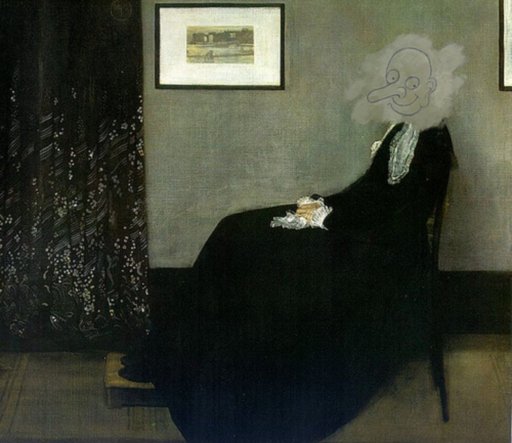Art Films: An Introduction

Kirk Douglas as Vincent van Gogh in Lust For Life (1956)
(Dir. Vincente Minnelli | Metro-Goldwyn-Mayer (MGM))
Art films – not the ones where Europeans get naked and have sex in Paris apartments – but films about art have populated the movies almost since their invention. Of course the problem has always been that watching a film about a man in front of a canvas trying to capture his vision is about as interesting as, if you’ll excuse the obvious joke, watching paint dry. Consequently films about art and artists tend to be focussed on the personalities of artists rather than their process or creative vision – Picasso staring at an African mask until something clicks is interesting to only a few dedicated souls but Picasso getting drunk, shouting at his wife and then going off to the studio to sleep with his models before breaking them up into multiple viewpoints – that’s entertainment! In spite of his popularity Picasso is not the most depicted artist in cinema – that honour seemingly belongs to Leonardo Da Vinci who when he’s not painting can be counted on to work on making men fly. Other popular roles are Rembrandt, Andy Warhol and Goya.
Staid, socially functional, artists are of no use to filmmakers – you’re far more likely to see a Wayne Barker biopic than you might a film about William Kentridge any time soon. Dionysian impulses and antisocial behaviour are what will get your artistic biography the seventh art treatment – audiences want to see you drinking yourself into a stupor at 11am surrounded by empty wine bottles and unpaid rent bills rather than calmly sipping tea in Constantia contemplating your next still life with cosmos.

Vincent van Gogh in Lust For Life (1956)
(Dir. Vincente Minnelli | Metro-Goldwyn-Mayer (MGM))
Van Gogh, whose story is so dramatically tragic and ironic, is a firm favourite on screen – having been played by everyone from Kirk Douglas in Vincente Minneli’s Lust for Life to Tim Roth in Robert Altman’s Vincent and Theo and in a strange, not-even-going-to-bother-pretending-to-be-Dutch-I’m-from-New-York turn by Martin Scorsese in Akira Kurosawa’s final film Dreams. With a little editing you could make Kirk cut off Martin’s ear using Tim’s knife.
The best of the artbiopic genre combine stories and aspects of their subject’s personalities with an examination of how these shaped the work, shedding light on their often opaque personal visions – but these are fewer and further between than you might think. It’s more common for audiences to come out of films about artists shaking their heads at how such a genius could be such a dick than it is to understand anything new about the work. Next to the thousands of films about artists are those about artworks – often stolen by Nazis or condemned by priests or misunderstood by everyone – The Woman in Gold, The Girl with a Pearl Earring. And of course everyone loves a good caper about a bunch of loveable thugs who steal artworks from under the noses of rich snobs but that’s another story.

Luis Buñuel (Adrien de Van), Salvador Dali (Adrien Brody), and Man Ray (Tom Cordier) in Midnight in Paris (2011) (Dir. W. Allen | Mediapro)
Unsurprisingly the majority of films both about artists and artworks are skewed in favour of depictions of white western subjects – there are few films dealing with black or female artists, yet another glaring omission on the part of popular culture to challenge itself too much. The politics of the art world replicate themselves in the politics of cinema. In fiction films at least the taste of filmmakers is quite conservative and populist when it comes to the choice of subjects. Documentaries on the other hand have mushroomed to cover more recent trends and artists from all over the world but there’s no Yinka Shonibare biopic starring Idris Elba in the works just yet.
Over the next few months I’ll trawl through the archives looking at films about art and seeing what they can tell us about the popular perception of artists and how they reinforce or contradict what we think we know about creators and the creative process. I’ll look at why a film like Jacques Rivette’s epic La Belle Noiseuse offers a far more compelling examination of the Sisyphean struggle and turmoil of the process of making art than say a film like Pollock. Or why Tarkovsky’s Andrei Rublev is not just an art film but the art film. Or what we can learn about the art market from the Thomas Crown Affair….or not. Or why Legal Eagles is worth been considered just for Darryl Hannah’s horrible but hilarious misfired parody of Laurie Anderson and what Rowan Atkinson taught the world about Whistler’s Mother in the Mr Bean film and why Baz Lurhmann’s Moulin Rouge is to art what Madame Zingara’s is to a “fun night out.” It’ll be fun but mostly it’ll be a journey that reinforces the terrible, difficult and soul-destroying lives full of sex and drugs and booze lead by people who watch paint dry.

Restoration of James McNeill Whistler’s Arrangement in Grey and Black No. 1 in Bean (1997)
(Dir. Mel Smith | Polygram Filmed Entertainment)